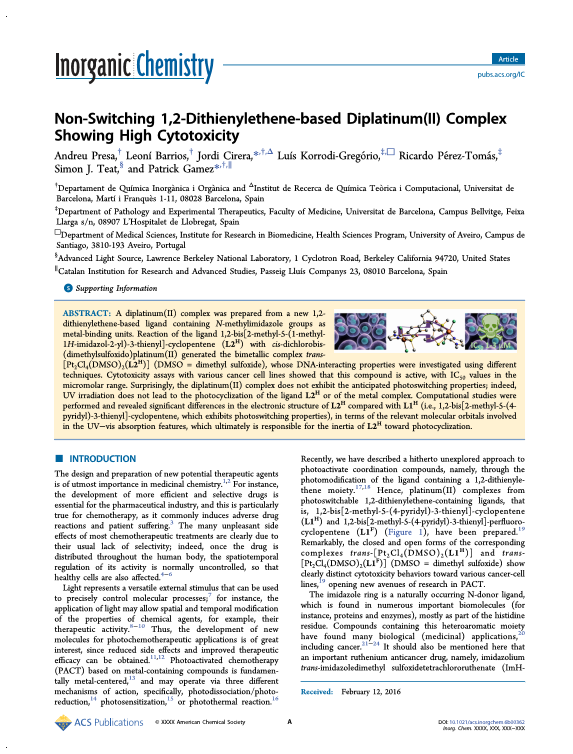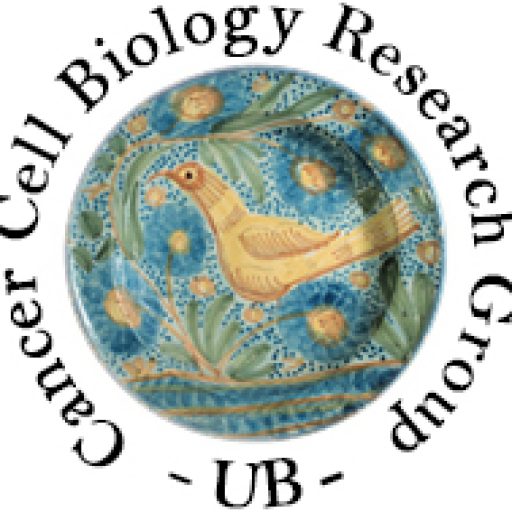Recent publication about non-photoswitching diplatinum compound in Inorganic Chemistry Journal in collaboration with Patrick Gamez group (University of Barcelona).
2016 May 6
Title: Non-Switching 1,2-Dithienylethene-based Diplatinum(II) Complex Showing High Cytotoxicity.
Authors: Presa A, Barrios L, Cirera J, Korrodi-Gregório L, Pérez-Tomás R, Teat SJ, Gamez P
Abstract
A diplatinum(II) complex was prepared from a new 1,2-dithienylethene-based ligand containing N-methylimidazole groups as metal-binding units. Reaction of the ligand 1,2-bis[2-methyl-5-(1-methyl-1H-imidazol-2-yl)-3-thienyl]-cyclopentene (L2H) with cis-dichlorobis(dimethylsulfoxido)platinum(II) generated the bimetallic complex trans-[Pt2Cl4(DMSO)2(L2H)] (DMSO = dimethyl sulfoxide), whose DNA-interacting properties were investigated using different techniques. Cytotoxicity assays with various cancer cell lines showed that this compound is active, with IC50 values in the micromolar range. Surprisingly, the diplatinum(II) complex does not exhibit the anticipated photoswitching properties; indeed, UV irradiation does not lead to the photocyclization of the ligand L2H or of the metal complex. Computational studies were performed and revealed significant differences in the electronic structure of L2H compared with L1H (i.e., 1,2-bis[2-methyl-5-(4-pyridyl)-3-thienyl]-cyclopentene, which exhibits photoswitching properties), in terms of the relevant molecular orbitals involved in the UV-vis absorption features, which ultimately is responsible for the inertia of L2H toward photocyclization.


